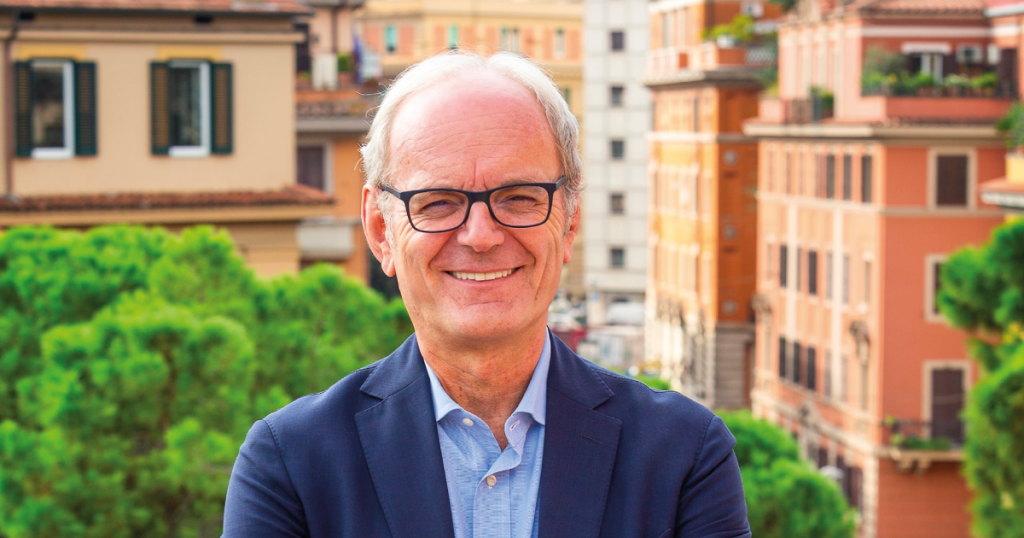Ferigo: «Today we’re focusing on integration, soon INWIT will look abroad»

INWIT’s CEO, Giovanni Ferigo, was interviewed by Il Sole 24 Ore. In the interview, he discussed various aspects of the company.
INWIT’s CEO, Giovanni Ferigo, was interviewed by Il Sole 24 Ore. In the interview, he discussed various aspects of the company.
Ferigo underlined how successful the first bonds ever issued by INWIT have been. “The first issue, to refinance the debt incurred to merge the towers, should have been 500 million euro with an eventual forecast increase to 750 million,” Ferigo explained. The CEO’s mandate has recently been confirmed for three more years, the same duration as that of the agreement between the two largest shareholders, Tim and Vodafone. “Demand, especially from Italian, British, German and French investors, rose to 4.5 billion and the denomination was raised to one billion.” The bond, handled by global coordinators Bnp-Paribas and Mediobanca, offers a yield below 2% and matures in six years.
Considering the 3-billion-euro bank debt to be refinanced, will others soon follow?
We’re not in any hurry. The first line of credit to refinance is 1.5 billion and expires in March 2022. The other loan expires in 5 years. We’ve chosen to pace ourselves.
Was there any kind of Italian effect?
Slightly. With a yield under 2%, we’re quite close to Cellnex, who has an international presence and is the sector benchmark. We chose this week due to abundant liquidity. It is a favorable scenario for a company like ours which has achieved a Fitch investment grade of BBB- and a Standard and Poor’s BB+ level.
What is the net debt/Ebitda ratio and what’s the target?
The merger began with a hypothetical net debt/Ebitda ratio of 6. Today, we’re at 5.7 after paying out extraordinary dividends. The target is to stay within the sector’s parameters, around 5, although anything up to 6 would be acceptable. Our cash flow is strong, so we can deleverage.
Let’s talk about industrial operations. Does combining Tim’s towers with Vodafone Italy’s mean having two captive networks?
The towers haven’t been Tim for a while now, since INWIT was created, but I would say that with the 22,000 towers that we have today, we’re joining two “adult” companies, going beyond Tim and Vodafone. Of course, there’s still a lot of integration work to do, but we’ve got a new organization where every line of the budget corresponds to a sales channel manager.
Future plans?
Since signing the contract, we’ve had some constraints, and the antitrust assessment took a few months longer than expected, but I believe that in Q4 we’ll start to see our revenue stream speed up.
How is the relationship between Tim and Vodafone regulated?
There’s an equal agreement for both that gives us preemption rights and better conditions to use our sites than does the market. We have to promote investments and innovation to involve other operators and take advantage of their infrastructure. Iliad and Fastweb with Linkem are among the third parties.
Antitrust “obliges” you to open the network.
It’s an opportunity. In cities with over 35,000 inhabitants, they’ve asked us to open 4,000 sites to operators other than Tim and Vodafone over eight years, 3,000 of which should occur in the next three years.
You’ve become the leader in Italy. Is there still room to grow, perhaps with EiTowers’s 1,000 towers?
Actually, to cover the entire nation, we don’t need anything more. Our 22,000 towers are enough.
If you can’t expand any further in Italy, will you be looking to consolidate abroad?
For the next 18 months, we have to concentrate on integration. We can think about opportunities abroad later. Obviously, having a partner like Vodafone among the shareholders will be helpful.
Speaking of Vodafone, that’s where the human capital has come from.
Sixty-four high-quality technicians have come from Vodafone, some of whom I already knew because we’d been competitors for several years. We’re also beginning to hire new young candidates to fill 20 or so positions (out of 192, Ed.) split between technical roles and general staff.